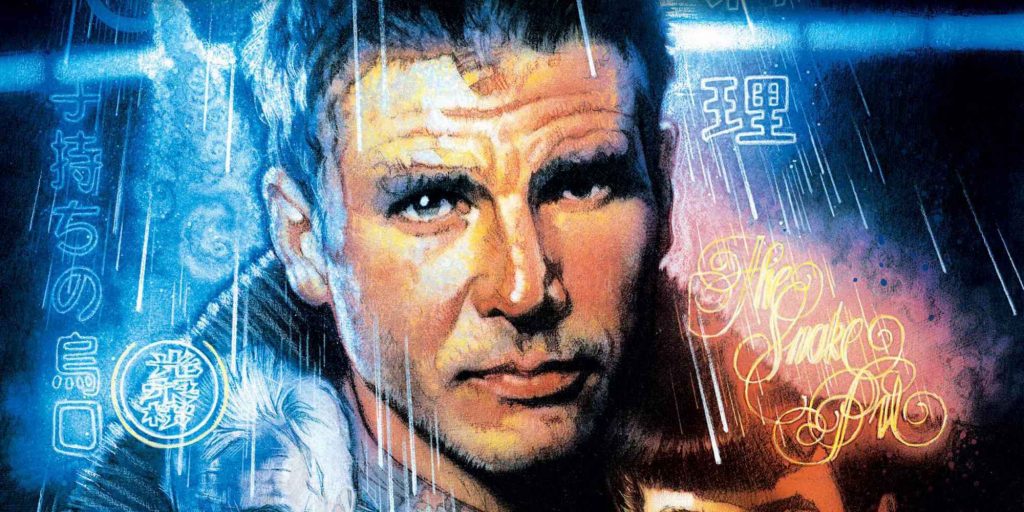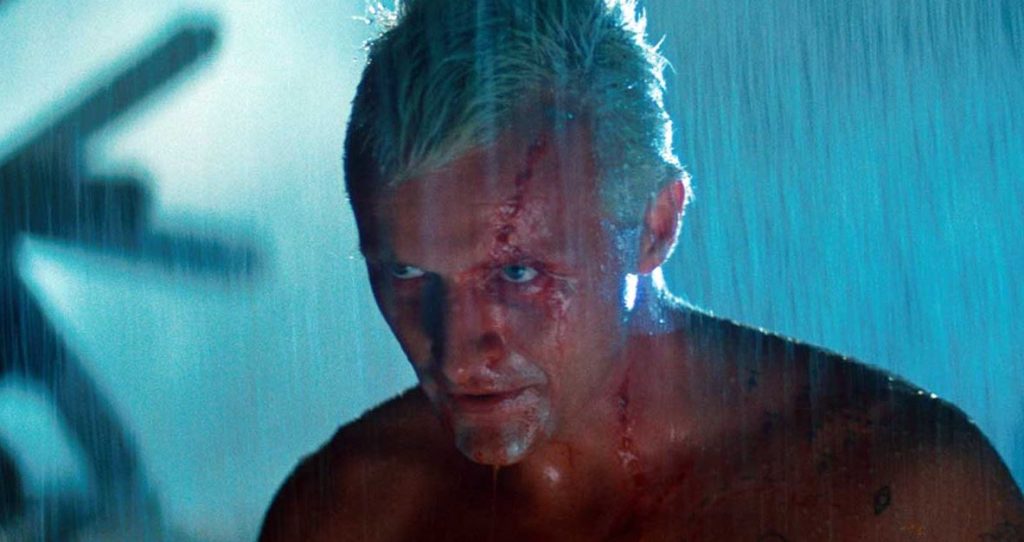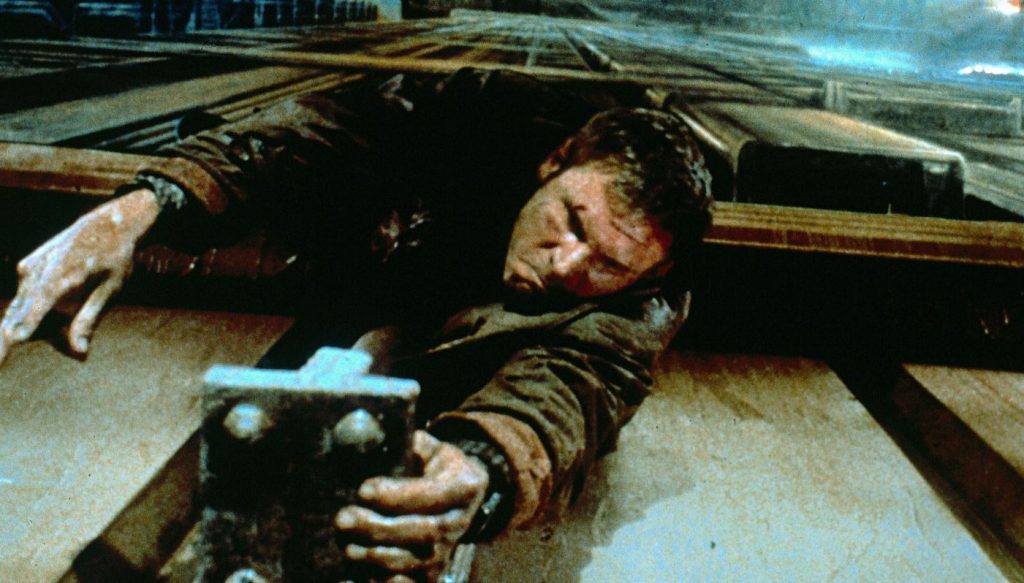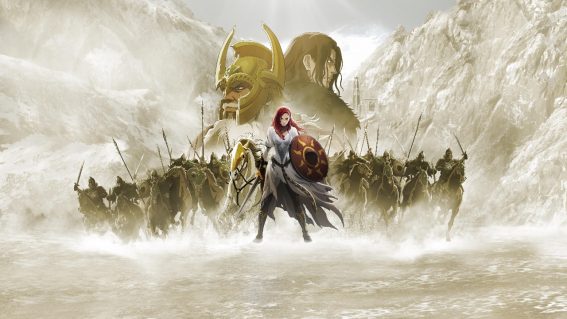Are Australian high schools bastardising Blade Runner?


Remember Rick Deckard: the surly, today-should-have-been-my-day-
Played with characteristic crabbiness by Harrison Ford, Deckard’s one job is to ‘retire’ (read: kill) human-like robots, which are on the lam and known in this universe – as in Denis Villeneuve’s critically acclaimed sequel, now playing in cinemas – as ‘replicants’.
Well, prepare to have your mind blown. I have this crazy theory that Deckard is a replicant himself; one of them all along. So when he was killing all those funky, sort-of 80s and sort-of futuristically dressed robots, he was, I posit, actually murdering his own kind.
This is not a theory likely to impress anyone, of course, anywhere in the world or at any point in time, other than perhaps when Blade Runner first arrived in cinemas in 1982. The question of whether Deckard is a replicant constitutes one of the most famous debates in cinema history, despite Scott making the answer quite clear (yes he’s a replicant) in his 1992 director’s cut.
Multiple generations have now contemplated this in classrooms. If you’re like me, your formal education involved images of origami unicorns and the blue-eyed, peroxide-haired, dove-hugging lead replicant Roy Batty (Rutger Hauer) grumbling “I want life, fucker.”

But it wasn’t the matter of whether Deckard was human that was core to my class, and countless others, when we wrestled with our final examinations way back when. It was whether he was humane, which is something quite different – and remains the focus for most studies in the curriculum today.
I can’t recall precisely what the question was on our final exam, such is the fogginess one squints through when they recall their teenage years, but it went something like this: “Roy Batty and Deckard show us what it means to be human. Do you agree?”
That question is both very wrong or very right, depending on your perspective – and how your teachers taught the material.
After watching Blade Runner 2049, I had a conversation with a friend (from a different school) who grimly recalled that “we were specifically told we could not argue that Deckard was a replicant. The school had designed our whole exam around the difference between his humanity and that of the replicants. I remember being really angry about that, as I’ve always felt that he was one.”
That approach comes dangerously close, I responded, to the school re-configuring the meaning of the text in order to fit their own curriculum. To which my still-bitter friend returned: “You say close. I say that’s exactly what they did.”
Lord knows how many other schools and how many other teachers did something similar – and are possibly still doing it today. And yet there is something beautiful about being asked a question like that in the first place, about Deckard’s humanity contrasted with Batty’s artificial intelligence. The very idea a human could be less human than a robot is a fascinating one, perhaps more so as we inch towards the oft-spoken about robot revolution.
Imagine, for a moment, that Deckard is a one hundred percent, dinky-di, flesh-and-blood person. What does it say about him (or us) when he, the human in the famous rooftop finale sequence, behaves like a cold-blooded killer while his would-be victim, the dying Roy Batty, behaves empathetically towards the man (for want of a better word) determined to assassinate him? Batty even saves Deckard’s life when he dangles from the edge of the building.

It is also Batty, not the stoic Deckard, who embarks upon that most human endeavour: constructing and performing – unprompted and unwanted, like a drunk singing on the street – spectacularly pompous verse. The sort heard at an open mic poets’ night in Newtown or Northcote. His now-legendary speech goes like this:
I’ve seen things you people wouldn’t believe.
Attack ships on fire off the shoulder of Orion.
I watched c-beams glitter in the dark near the Tannhäuser Gate.
All those moments will be lost in time, like tears in rain.
Time to die.
Lovely turn of phrase, you may be thinking, but what’s all this about “c-beams” and “Tannhäuser Gate”? The truth is that nobody really knows. The ability to babble confusing gibberish on the way out is, perhaps, another very human-like endeavour.
The point is that Batty is behaving in fundamentally human, and humane, ways. Showing a heart when, in the strictest sense, he has none. Ryan Gosling’s character also does this, albeit to a lesser and more naive extent, in Blade Runner 2049, expressing concern for the idea of killing something that’s been born – without stopping to wonder why that definition (being born) matters.
In both films the question is raised: what is the key ingredient to being a human? Is it memory? Empathy? An ability to enunciate profound sounding ruminations during times of inclement weather?
All these things, perhaps. The mongrel teachers who box in this discussion by insisting that Deckard is X and Batty is Y have disserviced a text with real philosophical backbone. And it is simply not unnecessary; the aforementioned scene says a great deal about being human, even if the audience consider both characters to be robots.
But studying Blade Runner at school remains a fond memory. There were times when I woke up, and half expected to see an origami animal next to my bed.












